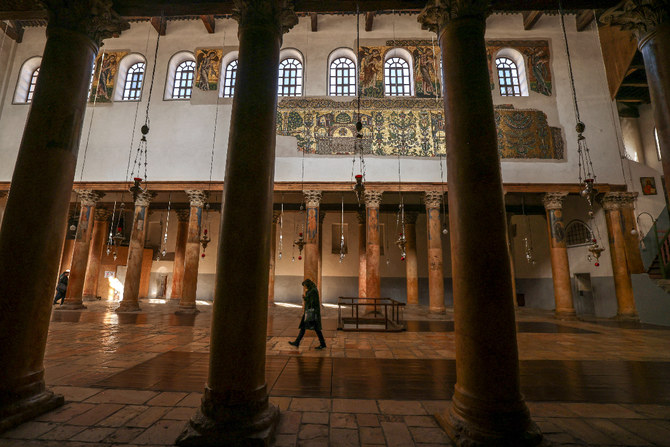
‘Atour of Becontree is demanding,” wrote Nikolaus Pevsner in his Buildings of England guidebook, “even for the enthusiast.” The charms of the largest interwar council estate in the world, which celebrates its centenary this year, were not immediately apparent to the German-born architectural historian in the 1960s. Nor may they be to many today. Sprawling across four square miles of Barking and Dagenham in east London, Becontree has neither the strident architectural drama of a place like Thamesmead, nor the quaint bucolic charm of a garden city. Instead, it is an archetypal vision of nondescript suburbia. Row upon row of brick terraced houses, each with their own front and back garden, are arranged along avenues and crescents, populated by the occasional parade of shops. So far, so humdrum.
But what Pevsner lacked on his tour was having Verity-Jane Keefe by his side. Seen through the eyes of this artist, who has been working in and around the estate for the last 15 years, the place becomes a kaleidoscopic patchwork of individual creative acts. There are the homes decorated with mock-Tudor paint jobs, facades fortified with rustic crazy paving, porches jollied up with porthole windows. Pastel-painted pebbledash jostles for attention with swirling roughcast render, both outdone by a sculpted plaster relief of a squirrel emerging from a decorative roundel.
Turn the corner and you find front doors framed by Corinthian columns and dangling plastic topiary balls, along with gates guarded by a pair of golden cement lions. One whole crescent, built from timber by Swedish carpenters in the 1920s, has the rustic treehouse aesthetic of Sylvanian Families. Another street sports streamlined art deco sun-trap windows, like something straight out of Poirot. The closer you look, the more Becontree reveals itself to be a wonderfully rich catalogue of curious domestic details. It is an open-air museum of the impact of successive housing policies, the different tastes of council maintenance departments and generations of right-to-buy owners wrought in plaster and paint.
“Some people think it’s a real mess when they finally come here,” says Keefe, as we stroll the streets, marvelling at the range of door types, porch shapes and other inventive add-ons. “Becontree is always shown in bird’s-eye views as this perfect vision of identical ‘homes for heroes’ with neat privet hedges. But the reality is a place made up of thousands of individual choices and adaptations over time.”
Built between 1921 and 1935 by the London County Council, Becontree was the most ambitious public housing project of its era. It transformed a 3,000-acre swath of market gardens in Essex into a model cottage-garden estate of 26,000 homes for 100,000 people, many rehoused from East End slums and able to enjoy running hot water and indoor toilets for the first time. “Heaven with the gates off,” was how one of the first residents described it.
In the decades since, it has followed the same fate as many council estates of the period, suffering from poor maintenance and seeing many homes sold off through right-to-buy. It was recently listed as one of the most lucrative places for landlords to invest, with the second highest buy-to-let yield in the country.
So how do you celebrate 100 years of a place like this, so far from its original conception, and which continues to be in flux? The official centenary programme, organised by the borough of Barking & Dagenham with arts organisation Create, includes a range of initiatives, from a pair of colourful new playgrounds by Yinka Ilori and Eva Rothschild, to new public squares on the estate’s corner plots, designed by nimtim architects, to be completed next year. But the project that most gets under the skin of the place is Keefe’s year-long residency, Living Together, which has explored the impacts on the estate of of de-industrialisation, immigration, workers’ rights and the right to buy, in collaboration with groups of residents.
Keefe half-jokingly describes her method as “lurking”. It is a form of careful close-looking that reveals hidden depths from details, combined with door-knocking and an easygoing charm that leads to being invited in for chats about ceramic owls over cups of tea. The outcomes are never clear, nor immediately obvious. Along with organising reading groups and virtual walks, one of the more surreal products of the residency has been a series of community banjo-band performances on the estate’s pedestrian cul-de-sacs – known as “banjos” for their round-ended shape.
Keefe’s year of observation and documentation has now culminated in an exhibition, Lived in Architecture, where she has transported the ad-hoc charm of Becontree to the stately surrounds of the Royal Institute of British Architects at Portland Place, London. It is possibly the first time that the Riba has seen crazy paving, pebbledash and cement lions celebrated in its hallowed halls – and it makes for a brilliantly surreal sight.
Visitors enter through a fake brick archway painted with a vaguely mock-Tudor pattern into a show conceived as a series of stage-set fronts, featuring a range of entrances and details sampled from across Becontree. One recreates the estate’s characteristic shared porch, where two homes’ front doors are framed by a single arched opening – except, in this example, one neighbour decided they would rather not share, so they bricked up their half of the entrance and built a new front door to one side, flanked by classical pilasters and topped with a uPVC pediment.
The replica frontages lead to little rooms where drawings from the Riba archive have been selected to elaborate on the themes of adaptation, extension and customisation from the last 200 years of architectural history. Some of the connections seem a bit tenuous, but the aim is to give historical weight to what might otherwise be snootily dismissed as suburban kitsch, showing that the home improvements you find in Becontree have an illustrious pedigree.
“There’s a lot of stigma around pebbledash,” says Keefe. “People assume it was all added in the 1980s, following the right to buy, but it was actually part of the original estate plans.” The exhibition includes Charles Rennie Mackintosh’s use of roughcast render (“the OG pebbledash” as Keefe puts it), as well as photos of a modernist house in Chelsea by Bauhaus maestro Walter Gropius that was later pebbledashed by Theo Crosby in the 1970s.
Other drawings show designs for grand classical porches to be bolted on to the front of Georgian homes, and beautiful images by the overlooked Victorian architect George Devey, who was a master of fictional historical collage. His magnificently fruity country houses were made to look as if they had been extended over the centuries, combining mock-Tudor walls with Flemish gables and medieval battlements in densely layered fantasies.
A highlight of the show is a 15-minute film, titled Wild Fantasies Are Always Worth Considering, which weaves Keefe’s poetic observations of Becontree together with the voices of residents discussing the quirky features of their homes. It includes footage of a pair of master plasterers at work, recreating the infamous squirrel for the exhibition, where it now hangs proudly on the wall next to images of the Villa Medici in Rome and Henry VIII’s Nonsuch Palace. Henry was so enamoured by the Medici stucco work that he imported Italian craftsman to recreate the effect, tenfold, across the facades of his opulent palace in Surrey in the 1500s (since demolished). The technique, which became known as pargeting in England, was copied by countless aspirational homeowners in the south-east, and enjoyed a revival in Essex in the 1980s. And the origins of the squirrel?
“When I asked the guy to render the front of the house,” we hear a Becontree resident recall in the film, “he said he could do something as a focal point. I came home and it was there. I never asked for a squirrel. We’ve been stuck with it, we have to love it. We do love it, we’ve got no choice.”
Lived in Architecture – Becontree at 100 is at the Riba Architecture Gallery, London, 21 October to 12 February.












